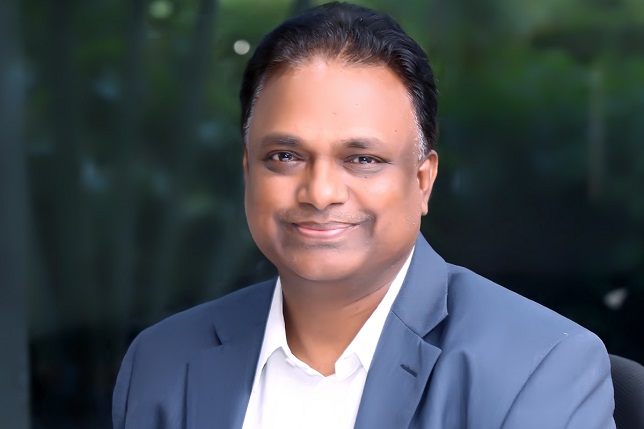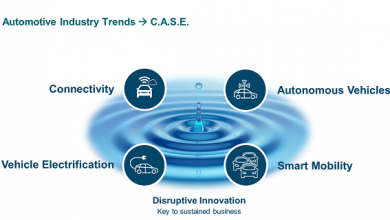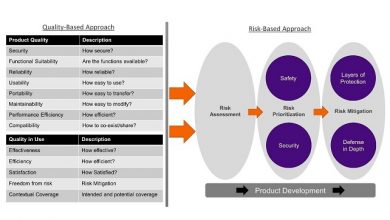ADAS has to evolve and adapt to Indian driving conditions: R Velusamy

Connected Vehicle
In M&M vehicle, we have an infotainment system and a cluster. Our cluster is QNX software based system. QNX platform is quite accurate for cluster. It gives speed, engine temperature, speed alerts etc. Infotainment for most of the time has been on QNX platform. But, it has been evolving like our smart phones and it has now moved to Android software.
As there was need for a customer touch point, like your smartphones, so industry started using Android Auto software for infotainment, which was earlier on QNX platform. Starting with XUV700 and onwards, we have moved to Android platform. It is easy to navigate and access features on touch screen. Android Auto software comes with multiple functionalities of which vehicles even monitoring air conditioning system operations besides radio, music, AM/FM radios, etc.
What next? is the question many of us have.
We have a common controller between infotainment and the cluster. You also add in-built connectivity through SIM. But this SIM can connect with only four URL connections. It is not like any other phone SIM, which can connect to any URL. It has a restricted connectivity, where in it can communicate to a mobile phone and three other sources that you can identify. From four of your defined destinations, it can go, fetch the information and come back. That is how the in-built connected car platform is developed, as of now.
Using this connected car network; you can bring your phone book into infotainment and, with Alexa, you can ask a phone number you want to call, also you can answer your phone call through the infotainment system of the car while you are driving.
As part of safety features, you can make emergency call. You can press the emergency button to make an emergency call, it automatically connects with the predefined or set number. You can also track your car. Whenever you cross a toll booth, it pays the money and you automatically get notification. Additionally, you can track the speed of your vehicle, which route your vehicle is taking etc, while sitting at home.
Than you have features in connected car which helps to know, where vehicle is parked. With your mobile, it can navigate you to the vehicle.
You can do fuel payment, toll payment, service bill, and entertainment. You can download videos, connect your phone, you can watch videos. Also, you have a remote door unlock/lock and remote engine off/on. If somebody is trying to steal the car, you can activate the headlamp hazard. Besides this it gives continuous alerts on engine speed, vehicle speed, etc.
The Android Auto had helped in integrating many apps. For an example- Where do we go from here? Details of towns and localities which you pass by when going to a destination. Along the route point of interest like fuel stations, restaurants etc. are provided. There are apps which provide news updates, horoscope, stock market update etc.
Now what next in connected car?
The only four URL connections restriction, needs to be looked into. You have to provide your passenger, a display instead of cluster infotainment panel that belongs to driver. There you cannot give, the videos, serials, cricket live matches. But in the rear seat, you put a display which through the connected car can fetch all the information that is allowed. You need a programmable eSIM wherein the OEM is giving the SIM and then you access the SIM and you rewrite or re-register using the Airtel or Vodafone or whoever is the supplier. You can buy the number and you can register that number to this car to be used in the third screen. This number can be linked to Jio TV, Prime, Netflix etc. In this screen we allow programs to be downloaded, in addition to documentaries, videos and cricket matches, live matches. We are making our car as a digital device with their biggest screen. You don’t require to hold their mobile and watch a match, you can just search on the co-passenger screen or the rear passenger screen and then you keep watching. The car connectivity provides you the facilities to watch the live cricket match or live event or cinema or serials that is stored in these internet webcasting. That’s the next level.
The other area where there is development is the vehicle to vehicle communication. For example, I have an XUV700 and another XUV700 is coming. I can connect with the other coming vehicle and share information. For an instance there is an emergency situation, say a storm or traffic jam, the vehicle can broadcast to other cars informing them to avoid the route.
Further we are exploring CV2X, where all the three kinds of communications will be feasible- Vehicle to Vehicle, Vehicle to Infrastructure and Vehicle to Pedestrian communications.
On DSRC Vs 5G
We will go with 5G. We will not go with the DSRC, as we are all know that US is moving away from the DSRC to 5G. Besides, this you need not install any other device when using 5G for V2V, the existing connected vehicle system does the needful.
On ADAS
Talking about ADAS, it has to evolve and adapt to Indian driving condition. When we were developing ADAS for XUV700, during that time, I happened to drive an imported car with inbuilt ADAS. And I was not happy about it. While driving around Bangalore, I really got irritated with it. It doesn’t allow you to go. Every now and then it was stopping/braking. There were so many restriction while driving it. It was a nuisance rather than a help.
It took us years to develop our ADAS. It was series of driving, giving the feedback and working on it. While it is one thing to evolve the detection algorithm and another is what to do after you detect. One is policy algorithm and another is guidance algorithm. This policy and guidance algorithm has been developed so well in the XUV700 that it is like an Indian driver, who would anticipate thing driving on road.
The lane keep, assist the driver. Along with cruise control, it can do straight drive on its own. Of course it asks you to keep your hands on the steering.
We started with one radar and one camera. And now you have five radars, one camera, and twelve ultrasonic sensors. The five radars and one camera can do about 42 functions. It can give L2 plus vehicle autonomy.
You also can give training for autonomous parking where the road is known. Once trained the car, it can park itself on its own.
On M&M autonomous vehicle
We are developing it. Developing algorithm for city driving is extremely difficult, where the rules are dynamic. It is so difficult to formulate the policies and then to implement.
Hence, it’s not so easy to commit the timeline. As a responsible OEM committed to safety, we will bring in higher levels of ADAS first because that brings safety and alertness.
We will not throw a software that is not so matured and then you have a problem. So at this point, we are not able to give a commitment to autonomous.On Closed Environment Autonomous Vehicle
It is possible and it will come as we go forward.
Published in Telematics Wire





